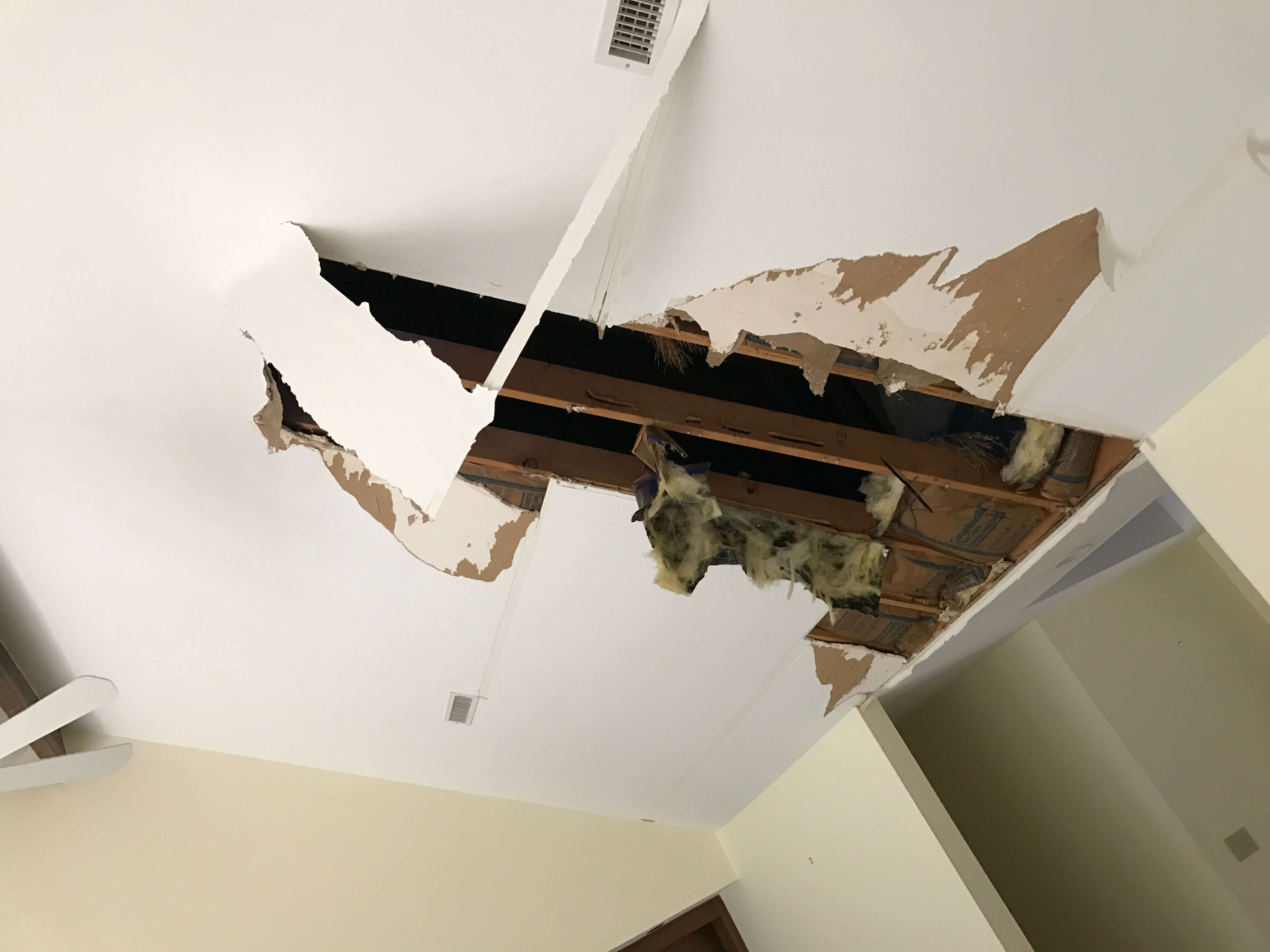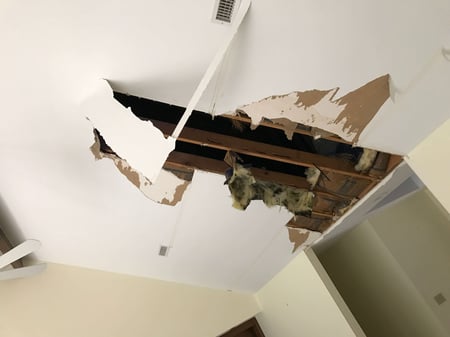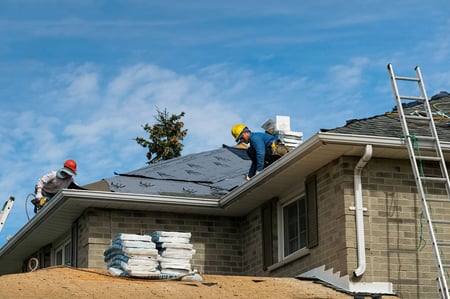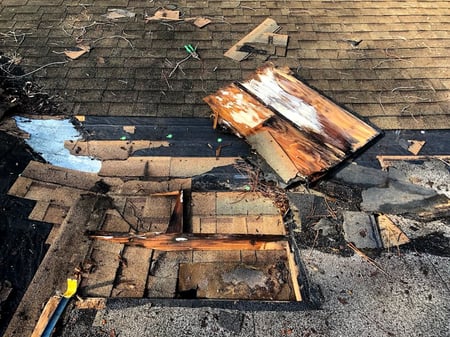
The integrity of a home's roof is paramount to its protection against the elements. Yet, roof leaks, whether large or small, can be elusive, often hiding in plain sight, unbeknownst to homeowners until they result in significant damage.
Detecting and mitigating hidden roof leaks is a critical aspect of home maintenance and preservation. At RoofCrafters, we can tell you that this process requires a careful and systematic approach, from vigilant inspections to the utilization of specialized techniques and professional assistance.
So, if you’re curious about the possibility of having a roof leak or two and not knowing it, you’re in the right place. In just a few short moments, you’ll learn the reasons why you may not be able to immediately detect a leak, how to mitigate a hidden leak, and what your plan of action should be. Let’s get started!
Can I Have a Roof Leak and Not Know It?

Sadly, it’s possible to have a roof leak and not know it, especially if the leak is small or occurs in an area of your home that you do not frequently access. Here are some reasons why you might not be aware of a roof leak:
.png?width=1200&height=200&name=Recommended%20Reading%20(33).png)
Hidden location: Roof leaks can occur in areas that are not easily visible, such as the attic or in between the layers of roofing materials. Unless you regularly inspect these areas, you may not notice the leak until it causes more significant damage.
Slow leakage: Some roof leaks are slow and gradual, allowing water to enter your home over an extended period. You might not notice the damage until it becomes more severe.
Absorption by building materials: Water from a roof leak can be absorbed by insulation, drywall, and other building materials, which can hide the source of the problem. By the time you see visible signs of water damage on your ceilings or walls, the leak may have been ongoing for some time.
Seasonal variations: Roof leaks may be more noticeable during heavy rain or snow, but they can go unnoticed during dry spells or when the weather is consistently mild.
Lack of regular inspections: If you do not regularly inspect your roof or have it inspected by a professional, you may miss the early signs of a roof leak. Periodic inspections can help identify issues before they become major problems.
To prevent the possibility of having an undetected roof leak, it's a good idea to perform routine roof maintenance and inspections. Look for signs of damage, such as missing or damaged shingles, cracked flashing, or discolored spots on your ceiling or walls.
If you suspect a roof leak, it's essential to address it promptly to prevent further damage to your home. Additionally, consider scheduling regular roof inspections by a professional to catch potential issues before they become serious problems.
How Do I Deal With an Undetectable Roof Leak?

Dealing with an undetectable roof leak can be challenging, but there are 10 steps you can take to identify and address the issue:
.png?width=1200&height=200&name=Recommended%20Reading%20(34).png)
1. Look for Visible Signs of Water Damage: Inspect your ceilings and walls for any signs of water stains, discoloration, or bubbling paint. These can indicate the presence of a hidden roof leak.
2. Check the Attic: If you have access to your attic, inspect it for signs of water intrusion. Look for wet insulation, damp or discolored wood, or any visible water stains on the underside of the roof deck.
3. Use a Flashlight: On a sunny day, turn off the lights inside your home and use a flashlight to inspect your ceiling and walls. The light can help reveal water stains that may not be visible in regular lighting.
4. Monitor During Rain: Try to observe the area during the next heavy rainstorm. Sometimes, water leaks become more apparent when it's actively raining. Look for any water dripping or running down walls and into your home.
5. Use a Moisture Meter: Moisture meters can detect hidden moisture within building materials. You can use one to check areas with suspected leaks for elevated moisture levels.
6. Hire a Professional: If you're unable to locate the source of the leak on your own, or if you suspect a hidden leak, it's a good idea to consult a professional roofing contractor. They have the experience and equipment to pinpoint the issue accurately.
7. Consider an Infrared Inspection: Infrared thermography is a technology that can detect temperature variations in your home. It can help identify areas where water may be entering due to temperature differences. Professionals can perform an infrared inspection to detect hidden leaks.
8. Temporary Measures: If you suspect a roof leak but can't immediately identify it, you can use temporary measures to minimize further damage. Place buckets or containers to collect water and towels or rags to soak up moisture. These precautions can help prevent water damage while you address the issue.
9. Repair or Replace Roofing Materials: Once the source of the leak is identified, you'll need to repair or replace the damaged roofing materials. This may involve fixing or replacing shingles, flashing, or other components of your roof.
10. Address Interior Damage: If there is water damage to your ceilings or walls, repair or replace those affected areas. Mold and mildew can develop if moisture isn't properly addressed. Remember that a hidden roof leak can cause significant damage over time, so it's essential to address the issue promptly.
Regular roof inspections and maintenance can help prevent undetectable leaks by identifying and fixing potential problems before they worsen. If you're unsure about how to proceed, or if you want to ensure the job is done correctly, consult a professional roofing contractor.
What To Do If You Suspect a Hidden Roof Leak

As you now know, mitigating a hidden roof leak is a crucial step in protecting your home from water damage and potential structural issues. The first key is to be vigilant, regularly inspecting your ceilings, walls, and attic for any signs of water intrusion or damage. When dealing with an undetectable leak, patience is essential, as locating the source can be a meticulous process.
Employing professional help and specialized tools, such as infrared inspections, may be necessary for accurate identification. Prompt action to repair or replace damaged roofing materials is imperative to prevent further damage. Additionally, addressing any interior damage, such as water-stained ceilings and walls, is essential to prevent mold and mildew growth.
Regular roof maintenance and inspections can help prevent hidden leaks in the future, ensuring the long-term integrity of your home. If you suspect a hidden roof leak or are past due for a good ole roof inspection, be sure to hit the “Schedule an Inspection” button down below, and one of our professionals will examine the health of your roof, and be sure to let you know the good news or if there are any areas that may need a little TLC!
My name is David Toth and I am the lead estimator in North Florida with RoofCrafters Roofing. Originally from New Brunswick, I have called Florida home for the past 47 years. I enjoy cooking along with traveling to different historical areas in Florida when I have free time.



